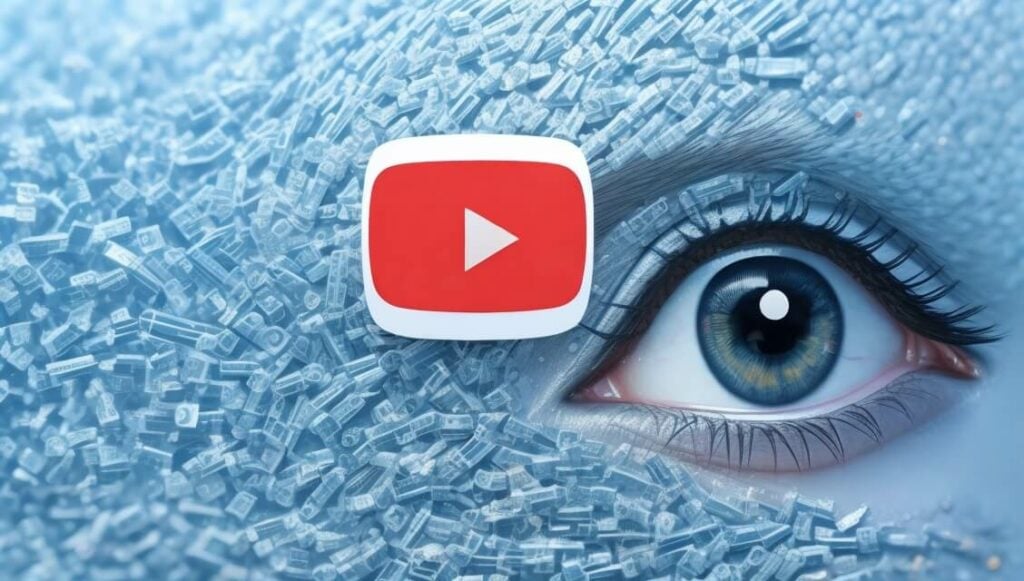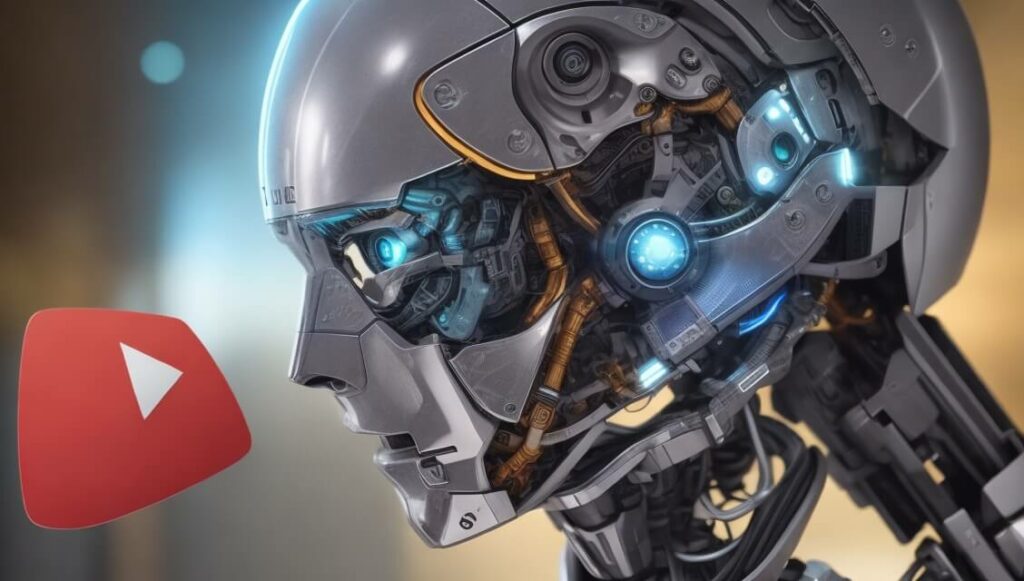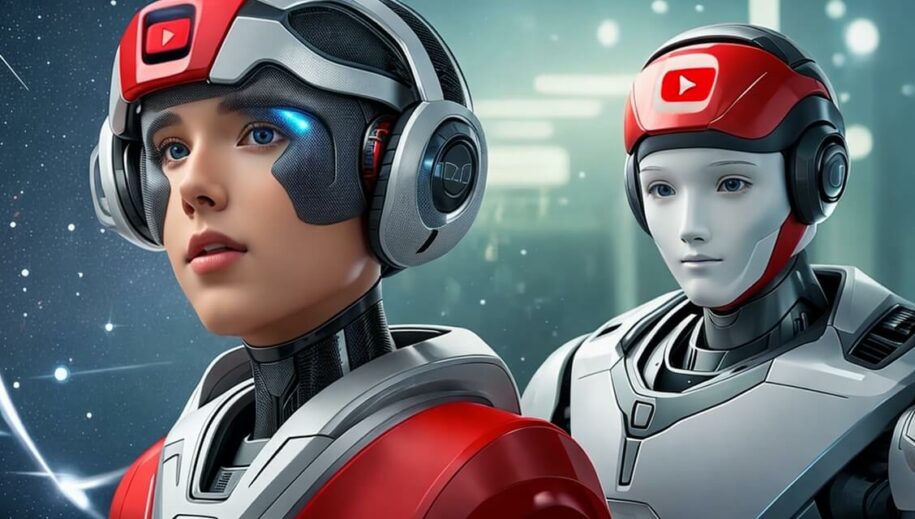After scouring the internet for Janet Jackson’s cringe Superbowl half-time video without success, three former PayPal employees, Jawed, Chad, and Steve, decided to create a video search engine in 2005. That’s how YouTube, now a subsidiary of Google, was born! It’s 2023, and YouTube has become one of the most visited sites in the world.
It boasts a staggering 3 billion monthly active users. But it’s not the only innovation with outstanding success.
We now live in a world where Artificial intelligence (AI) can diagnose medical conditions, drive cars, and complete many other sophisticated tasks. So the question is, does YouTube use AI? The answer is a resounding Yes!
But this article will dive deeper. We’ll uncover how YouTube uses AI, the benefits and risks of artificial intelligence, and how social media companies can mitigate them. These are exciting times. Let’s ride!
Does YouTube Use Artificial Intelligence?

It was at a CES event in 2018 when we heard from the horse’s mouth – something savvy tech individuals have known all along. Just in case you don’t know what CES is, it’s a yearly event dubbed “The Most Powerful Tech Event in The World.” It’s one of those meet-ups where you can see some elite tech stakeholders in person.
At the event, Neal Mohan, YouTube’s CEO and Chief Product Officer at the time, revealed that 70% of the videos we see stem from the platform’s AI-assisted recommendations.
YouTube’s algorithm has always played a huge part in what creators upload to the platform and what users get to see. For instance, before 2012, YouTube used to rank videos by view count. This implies the more a video gets watched, the more YouTube recommends that video to users. But this presented a problem.
View-hungry YouTubers would use misleading titles, video thumbnails, or bait-and-switch tactics to increase their view counts.
So what happened was that users would click on such videos only to discover they didn’t contain what they promised. But such videos would continue to be recommended despite them not watching until the end. YouTube stepped in with changes to the algorithm. This time, favoring videos with longer watch times or duration.
But it didn’t take long before the “gamers” found a way to trick the system again. They basically made lengthy videos that touched on the main topic but were filled with unnecessary fluff.
This also presented a problem of its own. The need for extended videos strained YouTubers, leading to burnout as they had to produce more with fewer resources. During this time, certain video types, like gameplay recordings, gained popularity due to their ease of creation compared to scripted reviews.
All that would take a new turn when YouTube introduced AI and Machine Learning to its algorithm in 2016. A subsequent update in 2022 came as a response to curb what YouTube termed “inappropriate materials” on the platform. In the following section, we will see how YouTube uses this technology to serve content to users on the platform.
For those interested in the technical side of things and keen to dive deeper, there are numerous online resources on how to learn YouTube automation, which provides insights into the intricacies of how these algorithms and AI-driven features work.
How YouTube Uses AI?

OK, we have established the fact that YouTube uses AI. But how does AI work on YouTube? Here are some ways:
Enhancing Video Recommendations/Personalization
Personalizing user experiences plays a key role in the success of any social media platform, including YouTube. These social media companies want to ensure users consume content tailored to their needs.
In other words, no two users get identical content on their feeds. It is a feature that Artificial Intelligence and Machine Learning excel at. YouTube’s AI considers several factors to pull this off. It includes but is not limited to the user’s search history, liked videos, and time spent on certain videos.
Automatically Remove Inappropriate Materials
YouTube wants to ensure objectionable content or those depicting violent extremism have no place on the platform. In fact, one of its top priorities is to protect its billions of users from harmful content – another area where automation comes in handy. A report in 2020 revealed that about 8 million videos were taken down from YouTube, and over 70% of these were flagged by AI classifiers.
While YouTube’s Artificial Intelligence is not 100% accurate in carrying out this task, the company also has human identifiers who remove inappropriate videos even before they get viewed. Integrating manual efforts becomes important to differentiate the “actual terrorist” material from the newsworthy videos.
YouTube Artificial Intelligence for Translation and Video Captioning
YouTube has a global audience; hence, the need to break language barriers/meet the needs of users with hearing impairment becomes crucial.
This is another area where the company counts on Artificial Intelligence and advanced Machine Learning. Also, AI-backed translation and video description tools offer subtitles in various languages, extending the reach of videos to non-native speakers worldwide.
Copyright Identification and Protection
The issue of intellectual property theft has been a long-standing hurdle for social media platforms, including YouTube. Those questioning YouTube’s use of AI will certainly back the company’s move in this direction. Here’s an interesting fact: It’s nearly impossible to manually check for copyright infringement on YouTube, given that over 400 hours of video are uploaded every 60 seconds to the platform. So this is where automation comes in: It scans uploaded content against a vast database of copyrighted files, ensuring that any content that infringes on intellectual property rights can be automatically detected and flagged. YouTubers can then decide if they want the material monetized, flagged, or taken down. This doesn’t help copyright holders get rewarded for their hard work but ensures users enjoy original and engaging content on the platform.
Other areas where YouTube uses AI include policy enforcement, advertisement management, and metric analysis.
Benefits of Artificial Intelligence on Social Media
Undoubtedly, social media is woven into the fabric of our daily lives. It shapes perceptions and interactions and is often the source of amazing content for educational and entertainment purposes. With such influence comes a huge responsibility to ensure not just child safety fake news regulation but assistance to law enforcement agencies and overall platform integrity. These are features that can be effectively implemented with AI. Here are the impact of artificial intelligence in detail:
- Effective Moderation: Content moderation on YouTube is crucial, given its crowdedness.YouTube Artificial Intelligence scours through massive amounts of data in real-time. It flags offensive videos or potential cyberbullying for a safer user experience.
- Tailored Advertising: Every ad on YouTube is targeted to ensure better conversion rates and return on advertisers’ investment. YouTube tailors these ads with its AI-assisted insights and algorithm.
- Combating Fake News: One disadvantage of social media is that it can facilitate the rapid spread of fake news. AI-driven tools, some under development, to detect fake news and propaganda.
- Enhancing Accessibility: Beyond video captioning, as we see with YouTube, AI is used to describe images for visually impaired users, making social media more inclusive.
Risks Associated with Using Artificial Intelligence on Social Media
AI is a great tool for social media, but it also comes with associated risks. Let’s look at some of the dangers of artificial intelligence:
- Privacy concerns: With AI identifiers milking users’ data for personalization and recommendations, there are concerns about the storage, usage, and chances of third-party companies accessing this data.
- Total dependence: AI is smart, and its results are equally compelling, but the need for human input cannot be underestimated. This oversight and touch can be vital in nuanced situations.
- Potential Bias: If not trained properly, AI can inherit and amplify societal biases in the data it’s trained on, leading to skewed results.
Conclusion
The impact of Artificial Intelligence on social media and our lives in general increases by the second. In the course of this article, we hope we’ve provided the answer to the question, how does AI work on YouTube? We’ve also discussed the benefits of YouTube Artificial Intelligence and the associated risks. Benefits like tailored advertising, sensitive content flagging for child safety, and increasing accessibility make YouTube safer. However, we must also pay attention to the drawbacks to ensure that AI is used ethically and responsibly.
- Can You Buy YouTube Subscribers To Grow Your Channel Successfully? - March 11, 2024
- How to Use YouTube for Content Promotion? - October 12, 2023
- Does YouTube Use Artificial Intelligence? - October 10, 2023

